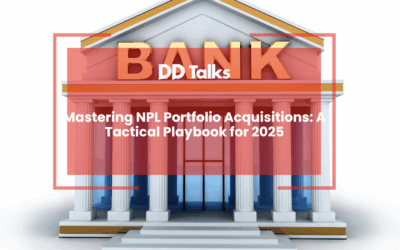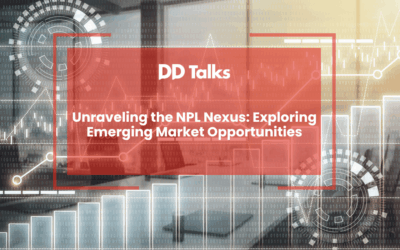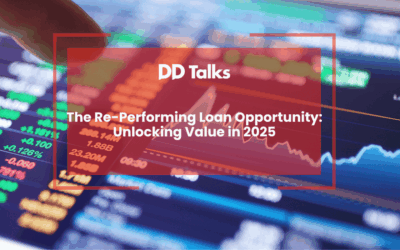Key Takeaways
- The European NPL market has matured significantly since 2008, with Italy and Greece evolving into professional markets while new hotspots emerge in Central and Eastern Europe.
- Leading NPL fund powerhouses in 2025 include established players like Cerberus, Blackstone, and Apollo, alongside specialized European firms like Intrum and Arrow Global.
- Top-performing distressed debt funds differentiate themselves through data-driven analysis, operational capabilities, and specialized expertise in specific asset classes or regions.
- Superior NPL investment returns correlate with technological sophistication, scale advantages, disciplined timing, and value-creation strategies beyond simple “buy and collect” models.
- Effective due diligence for NPL investments should evaluate track records across economic cycles, team composition, operational capabilities, and competitive positioning within the NPL ecosystem.
- Key risks in NPL investing include valuation uncertainties, regulatory changes, execution challenges, portfolio concentration, financing structures, and exit timing.
- Future opportunities in the NPL landscape will be shaped by digital banking transformation, sectoral shifts, geographic diversification, technological innovation, and ESG considerations.
Table of Contents
- The Evolution of NPL Markets: Key Players and Trends
- Who Are the Biggest NPL Fund Powerhouses in 2025?
- Strategic Approaches: How Top Distressed Debt Funds Evaluate NPLs
- Performance Analysis: What Separates Leading NPL Funds from the Pack
- Due Diligence Framework for Selecting Premium NPL Investment Vehicles
- Navigating Risks in the Distressed Debt and NPL Landscape
- Future Outlook: Emerging Opportunities in NPL Portfolio Acquisitions
The Evolution of NPL Markets: Key Players and Trends
The European NPL market has undergone significant transformation since the 2008 financial crisis, evolving from a niche investment sector to a sophisticated asset class attracting institutional capital. By 2025, the landscape has matured considerably, with NPL volumes across Europe stabilising after the post-pandemic surge that characterised the early 2020s.
Italy and Greece, once epicentres of NPL activity, have seen their markets professionalise with established servicing platforms and secondary market dynamics. Meanwhile, emerging hotspots in Central and Eastern Europe have gained prominence, with countries like Poland and Romania seeing increased NPL portfolio acquisitions. The market has also witnessed consolidation among NPL asset management firms, with larger players acquiring boutique operations to expand geographical reach and servicing capabilities.
Cross-border NPL transactions have become increasingly common, facilitated by harmonised regulatory frameworks and improved data transparency. The European Banking Authority’s efforts to standardise NPL definitions and reporting requirements have created a more efficient marketplace. Additionally, technological innovation has revolutionised NPL servicing platforms, with advanced analytics and AI-driven valuation models enabling more precise pricing and recovery forecasting.
Who Are the Biggest NPL Fund Powerhouses in 2025?
The distressed debt landscape in 2025 features a mix of established titans and innovative newcomers dominating the NPL market. Leading the pack is Cerberus Capital Management, which has maintained its dominant position through strategic partnerships with local servicing platforms across Europe. Their integrated approach to NPL portfolio acquisitions has yielded consistent returns, particularly in the commercial real estate sector.
Blackstone’s Tactical Opportunities Fund has emerged as a formidable competitor, leveraging its global reach and deep capital reserves to secure large-scale NPL portfolios. Their focus on developing proprietary NPL pricing models has given them an edge in competitive bidding scenarios. Apollo Global Management continues to be a major player, having expanded its European footprint through strategic acquisitions of regional NPL asset management firms.
Lone Star Funds remains prominent in the residential mortgage NPL space, while Bain Capital Credit has gained market share through innovative structuring of NPL investment opportunities. Among European-based players, Intrum has transformed from a servicer to a leading investor, while Arrow Global has successfully pivoted to a fund management model. New entrants like Davidson Kempner and Attestor Capital have carved out specialised niches in particular asset classes or geographical regions, demonstrating that focused strategies can compete effectively with broader platforms in the NPL fund space.
Strategic Approaches: How Top Distressed Debt Funds Evaluate NPLs
Leading NPL funds employ sophisticated methodologies when evaluating distressed debt opportunities, with approaches varying based on asset class, geography, and fund mandate. The most successful NPL investment strategies typically begin with granular portfolio segmentation, breaking down large NPL pools into manageable clusters with similar characteristics. This enables more precise valuation and tailored recovery strategies.
Data-driven analysis forms the cornerstone of modern NPL evaluation. Top funds invest heavily in proprietary analytics platforms that incorporate macroeconomic indicators, historical recovery patterns, and property market trends to forecast NPL recovery rates. Machine learning algorithms increasingly supplement traditional underwriting, identifying patterns that human analysts might miss and improving pricing accuracy.
Operational capabilities have become a key differentiator among distressed debt fund rankings. The most successful players either maintain in-house servicing expertise or forge strategic partnerships with specialised NPL servicing platforms. This operational focus enables them to extract maximum value through active management rather than relying solely on discount-to-intrinsic-value plays. Additionally, regulatory expertise has become essential, with top funds maintaining dedicated teams to navigate the complex and evolving regulatory landscape affecting NPL investments across different European jurisdictions.
As discussed in our analysis of top distressed debt funds, the ability to identify and execute on NPL secondary market dynamics has become increasingly important, with funds developing specialised trading desks to capitalise on market inefficiencies.
Performance Analysis: What Separates Leading NPL Funds from the Pack
The performance gap between top-tier and average NPL funds has widened significantly by 2025, with several key factors driving outperformance. Superior distressed debt investment returns are increasingly correlated with technological sophistication, as leading funds leverage advanced data analytics to identify undervalued assets within NPL portfolios. These technological advantages enable precision in bidding strategies, allowing elite funds to avoid overpaying while still winning desirable assets.
Scale has emerged as another critical performance driver. The largest NPL market leaders benefit from economies of scale in servicing operations, access to cheaper financing, and the ability to participate in the largest transactions. However, specialisation has proven equally valuable, with some boutique funds achieving remarkable returns by focusing exclusively on specific asset classes or geographical niches where they maintain informational advantages.
Timing and patience also differentiate top performers. The most successful NPL funds demonstrate discipline in capital deployment, accelerating acquisitions during periods of market dislocation while maintaining pricing discipline during competitive cycles. Additionally, the development of multiple exit strategies has become a hallmark of elite fund performance, with top managers creating optionality through securitisation capabilities, servicing platform development, and strategic partnerships with institutional buyers.
Notably, the best-performing funds have moved beyond simple “buy and collect” models to implement value-creation strategies, particularly in real estate-backed NPLs where property enhancement, repurposing, or development can significantly boost returns. This operational approach to NPL asset management has delivered premium results compared to purely financial engineering strategies.
Due Diligence Framework for Selecting Premium NPL Investment Vehicles
Institutional investors seeking exposure to the NPL sector must employ rigorous due diligence frameworks to identify the most promising NPL fund manager profiles. A comprehensive evaluation begins with assessing the fund’s track record across multiple economic cycles, paying particular attention to performance during market downturns. Investors should scrutinise not just headline returns but also risk-adjusted metrics and the consistency of performance across different vintage years.
Team composition represents another critical evaluation dimension. The most effective NPL investment teams combine diverse expertise spanning credit analysis, real estate valuation, legal frameworks, and servicing operations. Investors should verify that key team members have relevant experience in the specific NPL asset classes and geographies targeted by the fund. Additionally, alignment of interests through meaningful general partner commitments and thoughtfully structured carried interest provisions should be carefully examined.
Operational capabilities deserve special attention in NPL fund due diligence. Investors should evaluate whether the fund maintains proprietary servicing capabilities or relies on third-party servicers, and how these relationships are managed and incentivised. The fund’s technological infrastructure for portfolio management, including data management systems and analytics capabilities, provides insight into operational sophistication.
Finally, a thorough due diligence process should assess the fund’s competitive positioning within the broader NPL ecosystem. This includes evaluating sourcing capabilities, relationships with banking institutions, and access to proprietary deal flow. Funds with demonstrated advantages in transaction origination typically deliver superior returns in the competitive NPL marketplace.
Future Outlook: Emerging Opportunities in NPL Portfolio Acquisitions
The NPL landscape continues to evolve, with several emerging trends shaping future investment opportunities. Digital transformation of banking systems is creating new possibilities for NPL investors, as financial institutions increasingly leverage technology to identify and address problematic loans earlier in the cycle. This trend is generating opportunities in the “early arrears” segment, where distressed debt funds can acquire loans before they deteriorate into full non-performance.
Sectoral shifts are also creating targeted NPL investment opportunities. The ongoing transformation of retail and office real estate markets is producing specialised distressed situations that require sector-specific expertise. Meanwhile, the energy transition is creating both challenges and opportunities in carbon-intensive industries, where NPL investors with environmental expertise can navigate complex restructuring scenarios.
Geographic diversification continues to expand the NPL opportunity set. While Southern European markets remain active, emerging NPL hotspots in Central and Eastern Europe offer attractive risk-adjusted returns due to improving legal frameworks and less competitive bidding environments. Additionally, the development of NPL secondary market dynamics has created trading opportunities for funds with strong valuation capabilities.
Technological innovation is perhaps the most significant driver of future NPL market evolution. Advanced data analytics, artificial intelligence, and blockchain technology are transforming how NPLs are identified, valued, and serviced. Funds that embrace these technological capabilities will likely capture outsized returns through more precise pricing and improved operational efficiency.
Finally, ESG considerations are increasingly influencing NPL investment strategies, with opportunities emerging for funds that can effectively incorporate sustainability factors into their acquisition and management approaches. This trend is particularly evident in real estate-backed NPLs, where energy efficiency improvements can enhance collateral values and attract premium pricing upon exit.
Frequently Asked Questions
What are NPL funds and how do they operate?
NPL (Non-Performing Loan) funds are investment vehicles that specialize in purchasing distressed debt from financial institutions at discounted prices. They operate by acquiring portfolios of loans that are in default or near-default, implementing specialized servicing strategies to recover value, and generating returns through loan workouts, collateral liquidation, or portfolio resales. These funds typically employ teams with expertise in credit analysis, legal frameworks, and asset management to maximize recovery rates.
Which countries have the most active NPL markets in Europe?
As of 2025, the most active NPL markets in Europe include Italy and Greece (which remain significant despite market maturation), emerging hotspots in Central and Eastern Europe (particularly Poland and Romania), Spain (with ongoing real estate-backed NPL transactions), and Portugal. These markets feature varying levels of regulatory efficiency, servicing infrastructure, and competitive dynamics, creating diverse opportunities for specialized NPL investors.
What returns do top-performing NPL funds typically generate?
Top-performing NPL funds typically target net IRRs of 12-18%, though actual returns vary based on asset class, geography, and market timing. Elite funds consistently outperform by leveraging technological advantages, operational expertise, and strategic timing of acquisitions. The performance spread between top-quartile and average NPL funds has widened, with leading managers achieving premium returns through value-creation strategies rather than purely financial engineering approaches.
How has technology changed NPL investment strategies?
Technology has revolutionized NPL investment strategies through advanced data analytics for more precise pricing, AI-driven valuation models that improve recovery forecasting, digital servicing platforms that enhance operational efficiency, and blockchain solutions for improved transaction transparency. Leading funds now invest heavily in proprietary technology infrastructure, using machine learning algorithms to identify patterns in large datasets and optimize collection strategies for different borrower segments.
What are the main risks when investing in NPL funds?
The main risks when investing in NPL funds include valuation risk (inaccurate recovery assumptions), regulatory risk (changing legal frameworks), execution risk (delays in resolution processes), concentration risk (hidden portfolio correlations), financing risk (leverage-related vulnerabilities), and exit timing risk (market conditions affecting disposition strategies). Successful investors mitigate these through conservative underwriting, regulatory expertise, diversification strategies, and maintaining multiple resolution options for each asset.
How do investors conduct due diligence on NPL fund managers?
Investors should conduct NPL fund manager due diligence by examining track records across multiple economic cycles, evaluating team composition and expertise, assessing operational capabilities (including servicing infrastructure), analyzing technological sophistication, reviewing competitive positioning and sourcing advantages, scrutinizing alignment of interests through fee structures and GP commitments, and understanding the fund’s risk management framework and portfolio construction methodology.
What emerging trends will shape the future of NPL investments?
The future of NPL investments will be shaped by digital transformation in banking creating early-intervention opportunities, sectoral shifts producing specialized distressed situations (particularly in retail and office real estate), geographic expansion into emerging European markets, technological innovation transforming valuation and servicing capabilities, ESG considerations influencing investment strategies, and the continued development of secondary market dynamics creating new trading opportunities for sophisticated investors.




0 Comments